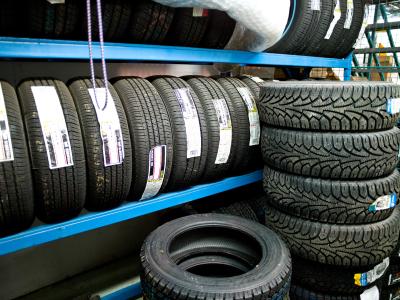The ribbed patterns on a vehicle tire are known as the tread design. These patters are carefully thought out by the tire manufacturer to perform well under the tire's anticipated operating conditions. The tread design may be symmetrical or asymmetrical in nature.

Symmetrical tires have a tread pattern that is the same across the inner and outer portions of the tire.

Asymmetrical tires have a tread pattern that is different across the width of the tire. When looking at an asymmetrical tire the inner and outer tread patterns will not be the same.

Most non-high-performance passenger vehicles will use symmetrical tires. Symmetrical tires are typically quiet and long lasting. Their tread patterns allow them to be rotated in many different ways, which substantially increases the life of the tire.

Asymmetrical tires are designed with vehicle performance in mind and are commonly found on sports cars. Asymmetrical tires have large blocks of tread on the outside to increase cornering stability and narrower blocks of tread along the inside of the tire to aid winter or wet weather driving.
WarningWhen replacing a vehicle's tires, never mix symmetrical and asymmetrical tires on the same vehicle. Mixing these two types of tires may cause the vehicle's handling to become unstable, particularly in wet weather.
